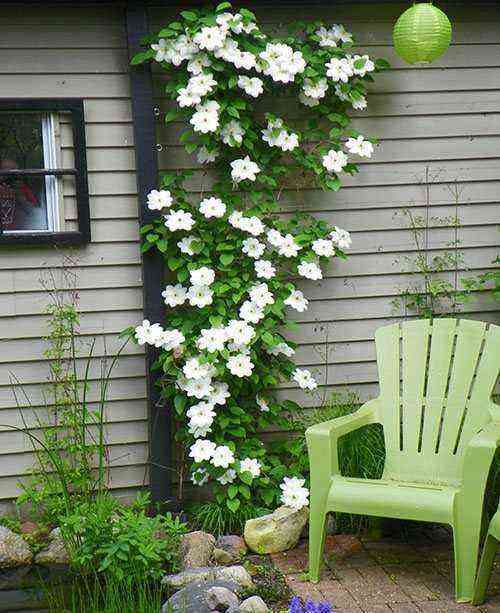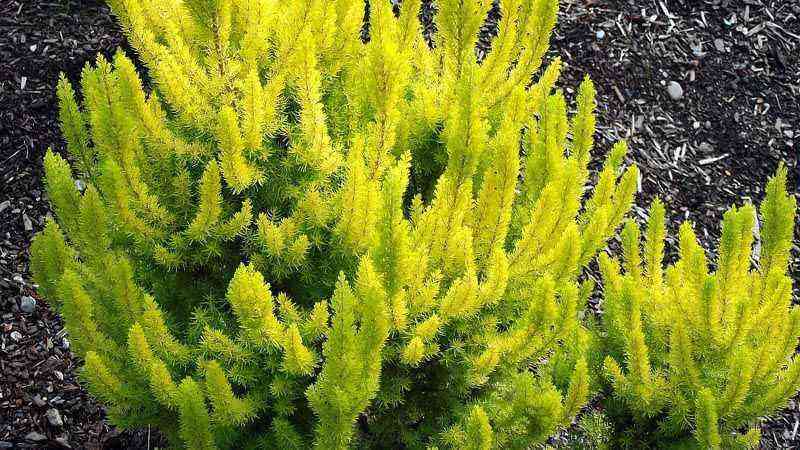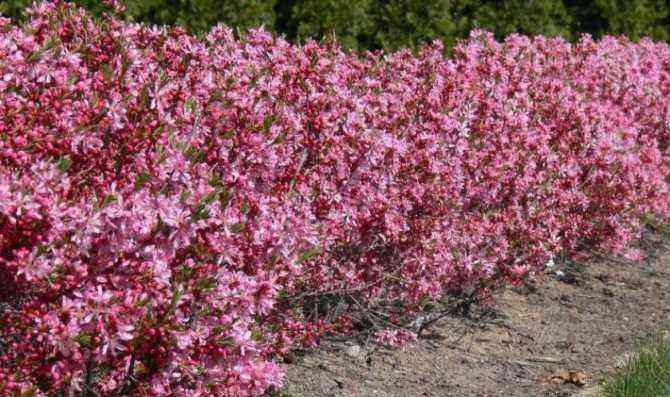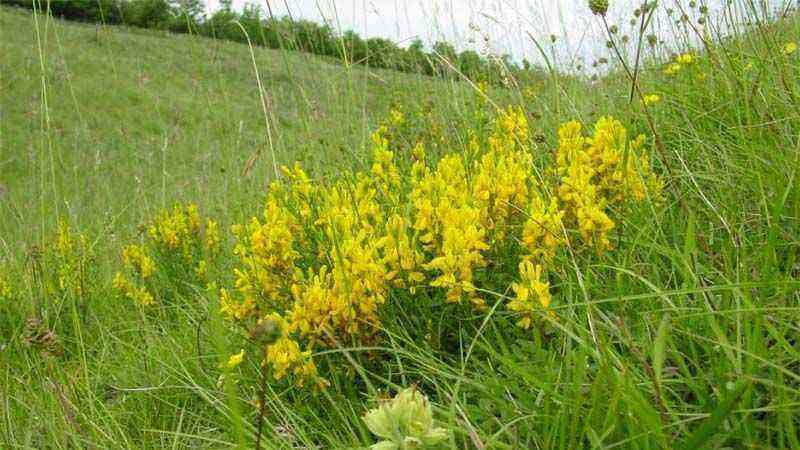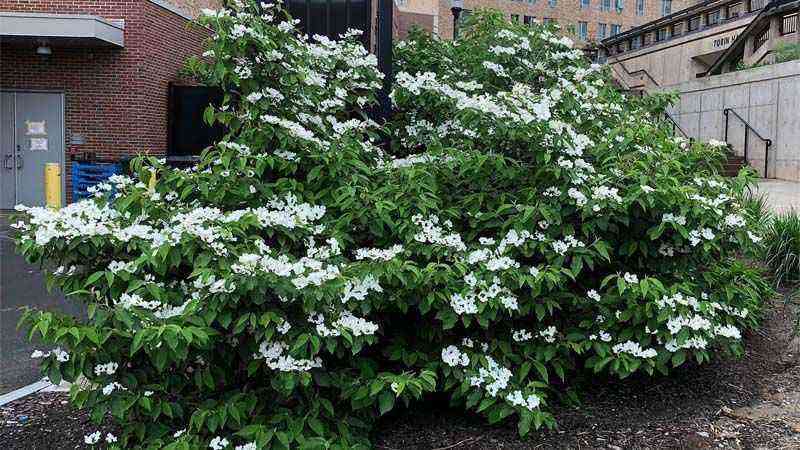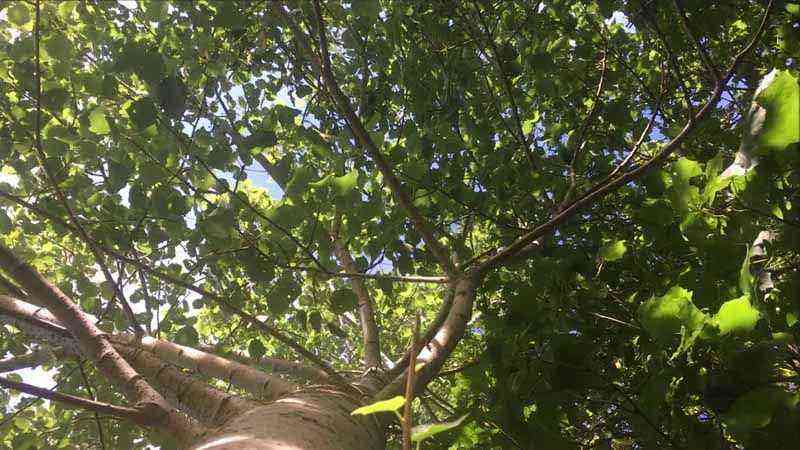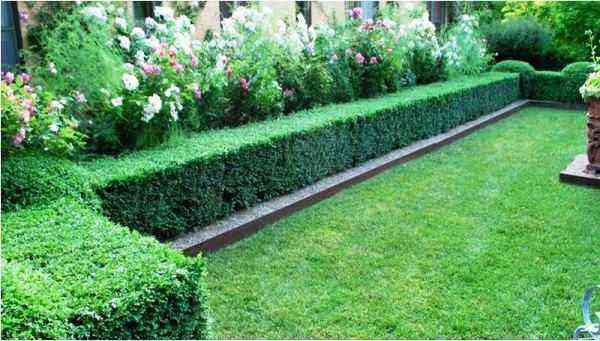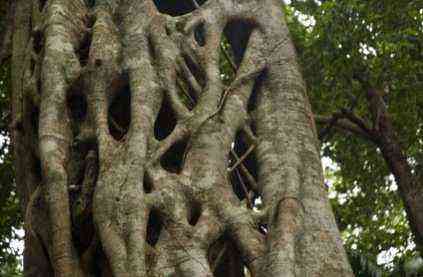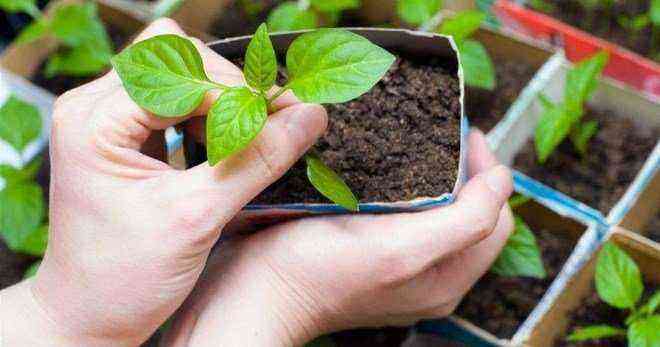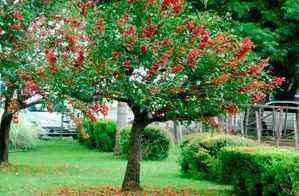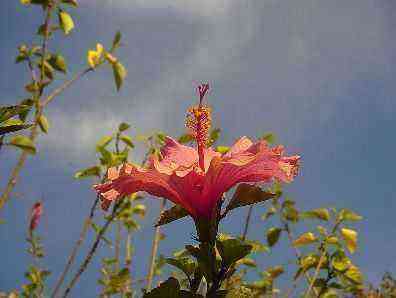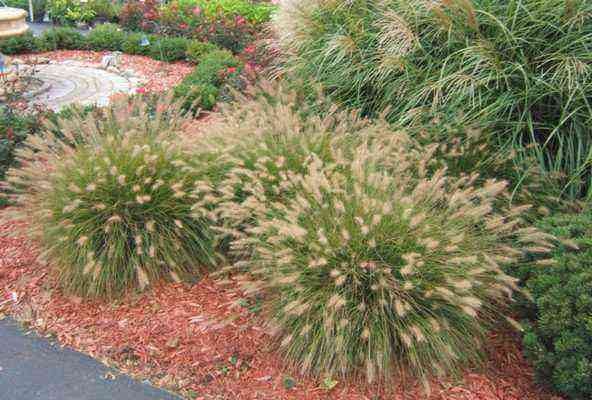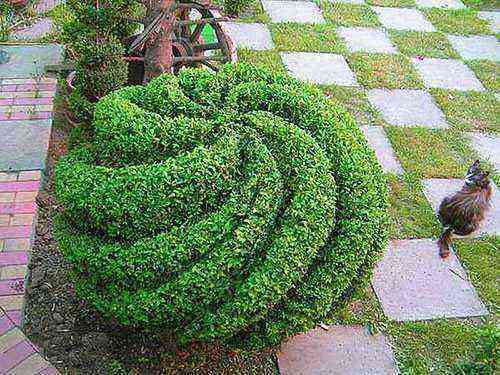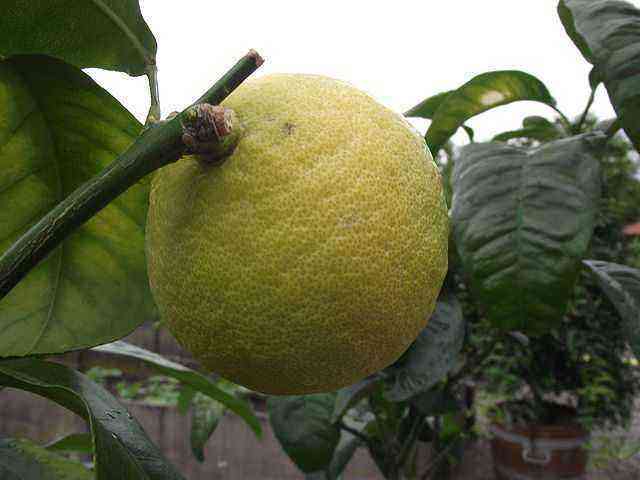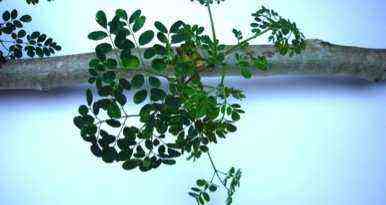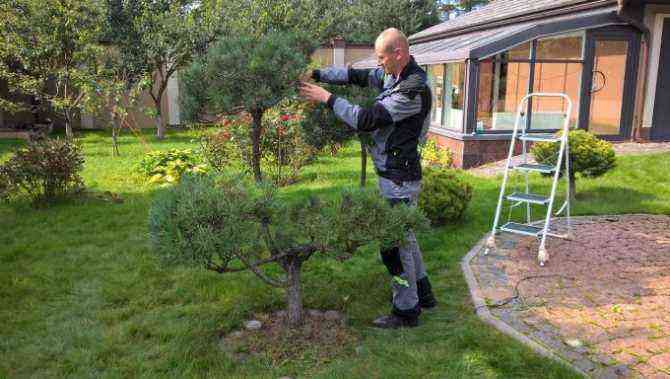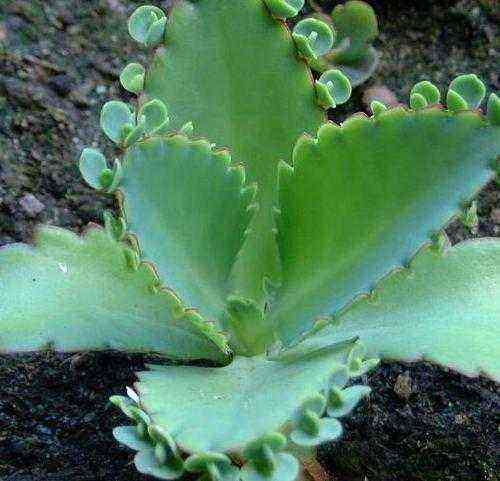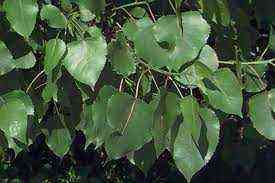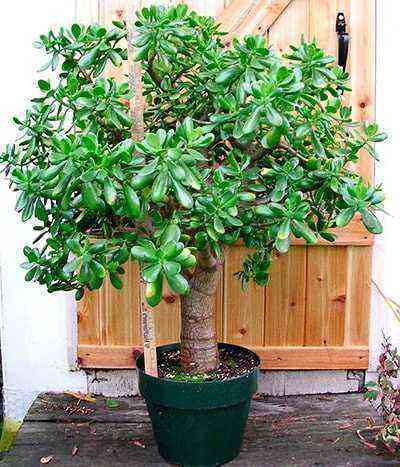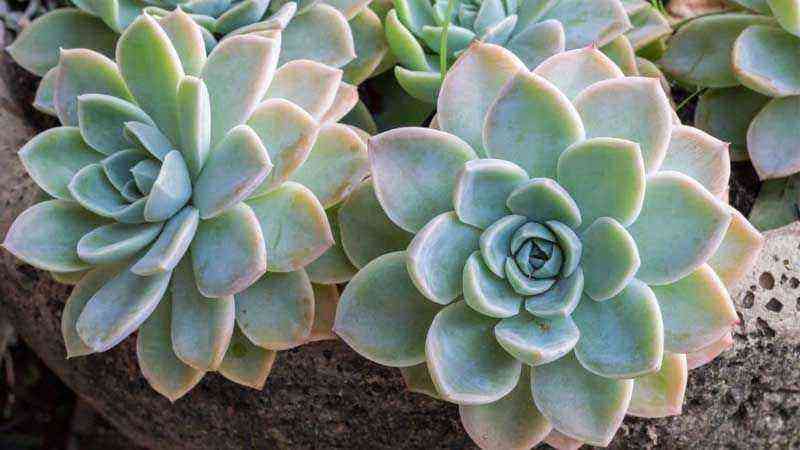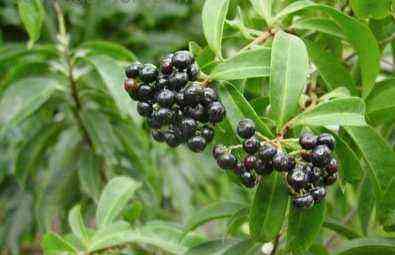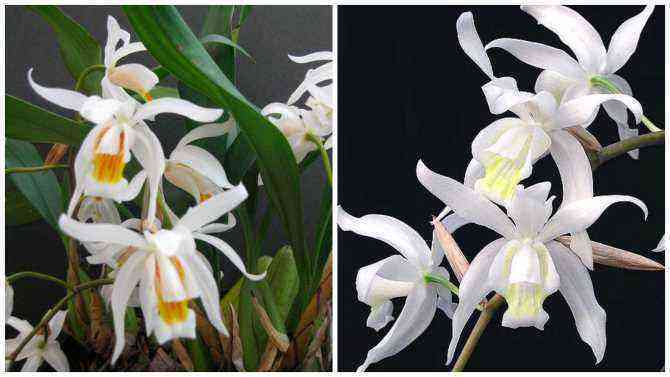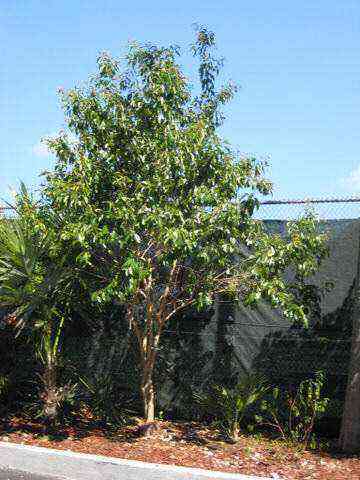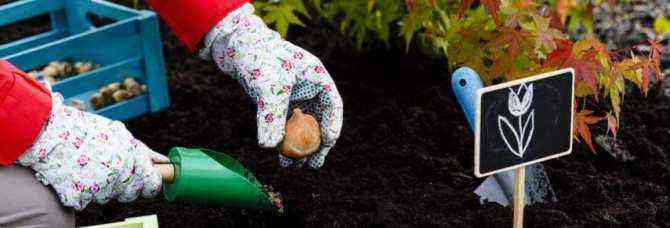Clematis (photo) is the brightest, unforgettable liana on Russian sites. If the summer resident only has to “tame” clematis, planting and caring for them in the open field is the key to success.
On the subject:
Derain white – planting and caring for decorative …
April 28, 2020
How to plant walnuts from walnuts – spring and autumn …
April 26, 2020
Ezhemalina – landing and leaving in the suburbs for …
April 23, 2020
Dimorfoteka – planting and care, photo of an unpretentious …
April 23, 2020
BACK FORWARD 1 of 60
If everything is done correctly, the plants have been developing and blooming in one place for more than 20 years, annually decorating the house and the backyard with hundreds of simple and double flowers of different colors and shapes.
When is it better to plant clematis: in spring or autumn
To determine the timing of planting vines, you should know the nuances of plant development. Florists plant seedlings in spring and autumn, there is no definite answer to the question. This is due to several factors:
- A variety of clematis. It is better to plant the main number of species in open ground in spring. Liana will have enough time to root and prepare for the cold. When planting in spring, the plants form a more powerful root system and have good resistance to many diseases.
- Growing region. In the southern and central regions, you can start planting very early. But in the north, you should wait until the end of April or the beginning of May. Autumn planting is not recommended at all, the plants simply do not have time to prepare for winter and will die.
- The condition of the root system of the seedling. Open requires quick landing. If the seedling is purchased in a container, then the planting time does not matter. Before planting, clematis are grown at home. A windowsill or balcony will do. At this time, carefully monitor the soil moisture, preventing drying out.
Basic recommendations for flower growers on the timing of planting clematis:
- Do not delay the spring planting after the end of May. Late transplanting is painful for clematis, so you need to give the plants time to adapt. However, it is also harmful to rush – return frosts can easily destroy the plant.
- It is undesirable to plant clematis in the summer.
- Finish the autumn planting 1-1,5 months before the start of frost (no later than the beginning of October). Additionally, you need to cover clematis for the winter.
Thanks to the recommendations, you can choose the optimal planting time for the bush.
Planting rules for seedlings
For successful rooting of a plant, you should adhere to the following recommendations:
- The size of the landing hole should be approximately 60 x 60 centimeters… When mass transplanting seedlings, a common wide trench is dug.
- The distance between adjacent pits should be within 1 meter.
- A landing pit for clematis is made to a depth of two shovel bayonets, but not less than 60-70 cm.
- On the bottom of each hole, a small layer of drainage from crushed stone or broken brick should be laid, a mixture of fertile soil and fertilizers should be added.
- Before planting, check the condition of the root system of the cutting – it should consist of at least five roots. A clematis seedling should have several shoots of 2-3 buds each. No mechanical damage is allowed!
- Planting material is planted in the ground with strong deepening – the root collar of the seedling and a pair of shoot buds should be below ground level. The roots of the plant are carefully straightened and sprinkled on top with the remnants of the prepared soil. Such planting promotes the development of a strong root system and reduces the risk of plant diseases. In addition, we must not forget that the planting depth depends on the size of the seedling – adult plants are buried to a depth of about 15-20 centimeters, young cuttings – to a depth of 5-10 centimeters.
- After planting, clematis needs sufficient watering.
- The planting site can be mulched with sawdust or peat.
Video: planting clematis in the fall
When to plant clematis in open ground in spring
The timing of planting clematis in the spring is due to the stages of plant development. It is advisable to plant early flowering varieties as early as possible, the rest 2-3 weeks later. The optimal date is April. In regions with cooler climates – May. It is important to monitor your kidney health. They should not grow up before planting.
The second factor on which the planting time in spring depends is the condition of the clematis seedling. If young shoots have appeared on it, then plants can be planted when the threat of frost has passed. If the buds are dormant, but the root system is open, then the best time in spring is April.
How to plant clematis in the spring
To plant clematis in the spring was correct, and the result is high-quality, you must follow certain recommendations:
- decide on the clematis trimming group, which affects the specifics of planting;
- choose the right place for the creeper;
- prepare the soil and the landing pit;
- plant clematis correctly;
- provide competent care for the vine.
In addition to planting seedlings, many gardeners grow clematis from seeds in the spring. This option has its own characteristics, which will be discussed below.
Planting clematis seeds in spring
This type of planting is more suitable for small-flowered species. Although gardeners are sowing different varieties. To get seedlings of clematis, you need to prepare the seeds – stratify. The procedure shortens the seed germination period. This is especially necessary for large seeds of 5-12 mm in size. Without stratification, large seeds germinate naturally for more than a year, medium – 6 months, and small from 1 to 3 months. The preparation is carried out in several stages:
- Vine seeds are soaked for a week in water, which is changed daily.
- Then they are sown in containers filled with a soil mixture of sand, peat and earth. You can get by with wet sand. The planting depth also depends on the size of the planting material. Large seeds of clematis are immersed in the soil by 2 cm, medium by 1 cm, small by 0,8 cm.
- It is kept for 7-10 days in a warm room (+ 18 ° С), then moved to the lower shelf of the refrigerator (+ 4 ° С) for 3 months. Some summer residents take containers out into the garden and sprinkle them with snow.
- At the beginning of May, the seeds are placed in a soil of sand and turf soil (1: 2), sprinkled with sand, lightly rolled.
- After the emergence of shoots (after 1,5-2 months), the seedlings of clematis are regularly moistened and loosened.
- When 2-3 leaves are formed on the seedlings, they are dived according to the 5×5 cm scheme, shaded, watering and loosening continue.
There are other ways:
- Sow clematis seeds in containers at the beginning of winter. The soil must be fertile and moist.
- Place containers in a room without heating – a loggia, a greenhouse.
- In the spring, they are transferred to a warm place in a lighted place, watered regularly.
- If seedlings do not appear after 20 days, leave the containers in a cool place until the next season.
- Small seeds can simply be soaked for 2 days and sown. When the seedlings sprout, transplant for growing or directly into the ground.
How to plant clematis in spring with seedlings
To carry out a competent planting of clematis with seedlings in the spring, it is necessary to clearly fulfill certain conditions.
It is important to choose the location carefully. There are several main criteria for a place for vines:
- Illumination. Clematis are sun-loving; when planted in the shade, they simply refuse to bloom. But at the same time it is important not to allow the roots to overheat.
- Calmness. Open areas are not suitable for vines due to the constant wind. If the gusts are strong, then the shoots of clematis break and the flowers break off. You need a garden bed, closed from the wind.
- Moderation in hydration. That is why you should not choose places near the roofs for planting vines in the spring. The water that flows from them leads to decay of the roots. Lowlands will not work either. Moisture stagnates in them, so the result will be the same.
- Ground water level. High location requires mandatory laying of drainage and drainage grooves.
- Support. Clematis is a climbing plant. Therefore, without support, it will not be possible to get a beautiful look of the plant.
The next criterion is soil. For a seedling, a place with a fertile structured alkaline soil is chosen in the spring. If the indicators do not correspond, then they are brought up to the level in the appropriate ways.
Landing pit. For one seedling, a pit 60x60x60 cm in size is needed.When group plantings, it is recommended to dig a trench with the same dimensions 60×60 cm in the spring.Leave 1,5 m between the bushes.
Planting clematis in the ground in spring consists of several steps. The gardener needs:
- At the bottom of the pit or trench, lay a drainage layer of crushed stone, expanded clay or broken brick 15 cm thick.
- Pour a layer of fertile soil on top, form a mound. Put a clematis seedling on it, straighten the roots.
- The root collar is left at the level of the soil or slightly lower. Deep deepening will lead to the death of the bush.
- Fill the hole with soil, lightly compacting with your hands.
- Water and shade liberally on a hot day.
Now it remains to make sure that the spring rains do not overwet the roots.
Correctly plant clematis in the spring from a purchased pot
The closed root system allows clematis to be planted in early spring and even summer.
First, you need to prepare a pit of a standard size for clematis. Remove the plant from the pot, soak the roots in a growth stimulant solution for 2 hours. Then set the roots on a mound, spreading evenly around the sides. Sprinkle with earth. Close the root collar and shoots by 5-7 cm. Falling asleep of the stem to the first internode is allowed. Thanks to this technique, the bush will develop well and tolerate frost.
Larger seedlings deepen more. If the plant is less than 2 years old, then to a depth of 12 cm. If the seedling is older, then up to 18 cm. After planting, the bush should be watered, mulched, shaded. One plant needs a bucket of water. Planting clematis in the spring from a container is considered more gentle for the plant.
Where to plant on the site
Clematis grow in one place for about 30 years, so for their lush flowering and active growth, you need to take into account the basic conditions for choosing a site for planting them:
- The soil. The plant is unpretentious to the composition of the soil, but loves loose soil enriched with fertilizer. It does not take root in a damp and swampy area. It is better to choose an elevated place – this will save clematis during the spring flood.
- Groundwater. The plant is adversely affected by the close standing of groundwater. Their optimum level should be no higher than 120 cm from the surface.
- Sunshine… Liana is photophilous, but you should not plant it in the bright and scorching sun – the flowers fade, and the plant withers. Clematis should be exposed to sunlight for no more than 6 hours a day. A place on the southern side of the site is suitable for growing them. Some varieties (Pink Fantasy, Hagley Hybrid, Comtesse de Bouchaud) prefer partial shade and tolerate lack of light well.
- Windiness. Drafts and wind have a detrimental effect on the plant – they damage and break off thin shoots of clematis, flutter large and delicate flowers. The site must be protected from the wind. You can not plant clematis close to the wall of the house – rainwater will drain from the roof and ebb tides, and it will die from an excess of moisture. The ideal option would be a secluded spot in the garden.

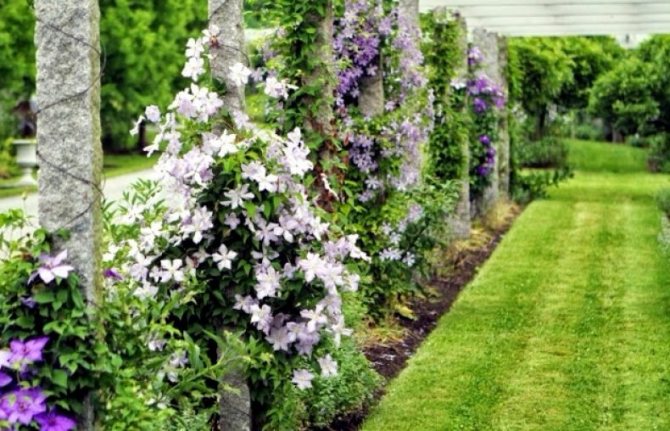
How to transplant clematis to another place in the spring
Transplanting clematis to another location in the spring requires a little more attention. It is best to replant clematis in late April or early May. In the regions of the northern region, it is necessary to shift the dates by 1-2 weeks later. Only warm weather is suitable for transplanting.
First you need to determine the location. It is important that it meets all the criteria. Clematis is a whimsical plant, so the new place should not be worse than the old one. The pit must be prepared a little deeper, but at the same time the width must be left the same. The roots of the liana grow deeper.
Special attention is required in the spring when digging up the bush. First, you need to dig a hole to the place of deepening the roots. Then remove the roots along with a clod of earth. This must be done carefully so that the lump does not crumble. The roots should not be untangled so as not to damage the thin branches.
Carefully transfer the plant to a new hole, dig in from all sides, and water. After a week, feed the plant. Care needs to be intensified to help clematis cope with stress.
Transplanting adult clematis in spring is more preferable than autumn. This time of the year makes it possible for plants to meet winter in a prepared state.
Clematis care in spring in the country
If the plants are properly cared for in the spring, they will delight the owner with lush and abundant flowering. The events are standard, but it won’t hurt to get acquainted with them again.
Watering and top dressing
Young plants need a lot of moisture. Watering in the spring is carried out often, but not abundantly. Both drying out of the soil and waterlogging should not be allowed. It is enough to water the plants 2-3 times a week.
Watering one bush consumes 3-5 liters of water. After watering, it is recommended to loosen the soil. Loosening is advisable within 3-4 months after planting. Then it is stopped so as not to damage the roots.
Top dressing is not needed in the first year after planting. This is provided that enough humus, compost, and ash have been added to the soil. The next year, in the spring, clematis is fed with nitrogen fertilizers, but the main thing is not to overdose. Excessive nitrogen will result in increased green mass and poor flowering. If the soil on the site is sour, then spring watering with lime milk will be needed.
Before flowering, complexes with phosphorus and potassium are introduced.
Pruning and garter
Clematis is tied to a support, which is installed during planting. In late spring, the vine grows 10 cm every day. The correct action is to tie the bottom of the vine as close to the ground as possible. Reception protects the bush from mechanical damage, which later serve as the cause of infection. When garter, the vine is fanned out on the support. The garter is performed according to the growth of the shoots. By changing the slope of the vines, gardeners regulate the growth and flowering of clematis.
Sanitary pruning is needed in the spring. One-yearlings are pruned to the level of the first bud, which stimulates the emergence of new shoots.
In the second year, cardinal pruning can be repeated. Then you should perform the type of pruning that corresponds to the variety of clematis.
Preparation for wintering
The first stage of preparation is group pruning.
- The first group is not cut off, they are not removed from the supports, they are not covered.
- The bushes of the second pruning group are shortened to 1 m, leaving strong shoots. Then they are removed from the support, laid near the roots, and covered.
- The third group of pruning is cut entirely, only it is necessary to leave 2 knots above the soil level (25-30 cm).
Plants of all pruning groups must be treated with a solution of copper sulfate and fed with humus. One bush takes one bucket of organic matter.
Next, you need to cover the clematis with a convenient familiar material – earth, peat, dry leaves. If the presence of mice is noticed in the country, it is imperative to put any remedy for rodents in the shelter. Lay a wooden shield on top, separating it from clematis with a stone or brick, then a layer of covering material and roofing material. This will protect the bush from getting wet.
When to open clematis in spring
You can open the plants when the snow melts, but it is best to wait for stable heat. In the regions of the middle zone, this is mid-April. After removing the shelter, clematis should be treated for fungal infections and fed with ammonium nitrate.
Further care in the fall
Despite the fact that many clematis are not capricious and frost-resistant, in the fall they need special care.
ЧTo prepare the plant for winter, you need to do a number of activities:
- Young seedlings need careful shelter for the winter. You can cover the plant with dry leaves, branches and cover it with roofing material, rub it with peat on top.
- No later than October, under each bush, top dressing is made from humus and ash.
- Watering in the fall is stopped so that excess moisture does not destroy the roots when it freezes.
- Yearling plants are cleaned of dry foliage residues and cut offleaving the trunk 30 centimeters long.
- Cut clematis are covered with earth or peat, creating a small mound, covered with branches and cellophane. A plant with long shoots must be rolled up, wrapped in non-woven material, laid on the ground, covered with roofing material or slate to protect the roots from excess moisture.
Video: shelter of clematis for the winter
How to keep clematis before planting in the spring
There are some tips for summer residents:
- If the purchased clematis is in a plastic bag with earth and its buds have not opened, then it is enough to place the plant in a refrigerator or a snowdrift. five
- With overdried soil, it is required to water the plant.
- If there are already leaves, then it is necessary to transplant the clematis into a larger container.
- Place the seedling on the coolest windowsill in the apartment. In strong light, shade.
- Examine the root collar. Add soil if necessary.
- Pinch strong-growing shoots. This stimulates the growth of roots and additional stems.
- Regulate watering so as not to overmoisten the roots.
When the temperature is right, plant clematis in open ground.
